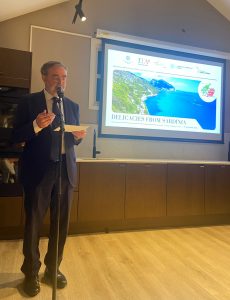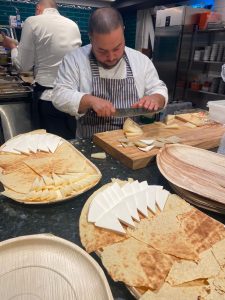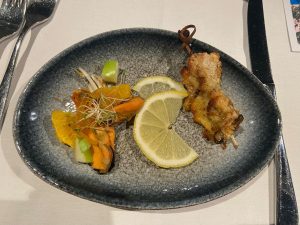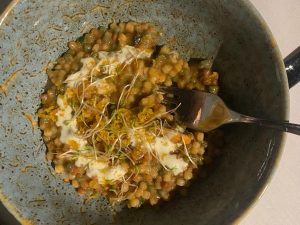This year, as part of the Week of Italian Cuisine in the World (SCIM), the Italian Embassy in Oslo has chosen to present Sardinian food and wine traditions to the Norwegian public in collaboration with the Nuoro Chamber of Commerce and the Nuoro ATI Association, Canne al Vento. This year’s edition of SCIM, promoted by the Ministry of Foreign Affairs and International Cooperation, has the theme “Italian Cuisine: Culture, Health, and Innovation“.
Sardinian food tradition fits perfectly within this context, as it is the result of centuries of rural and pastoral culture and is characterized by the responsible use of local ingredients and a low environmental impact. The island’s cuisine emphasizes durum wheat, legumes, vegetables, extra virgin olive oil, and dairy products, along with fish and meat. At the same time, the Sardinian diet is recognized as one of the healthiest and most balanced in the Mediterranean, associated with the island’s longevity, one of the world’s renowned Blue Zones. Simple recipes, slow preparation, and traditional techniques contribute to a rich yet low-waste diet. On November 19th, the Embassy, in collaboration with the Italian Trade Agency (ICE), welcomed approximately eighty food importers, restaurant and pizzeria managers, tour operators, journalists, and food bloggers from Norway to an evening inspired by Sardinian food and wine traditions. After an aperitif featuring cured meats and cheeses, guests enjoyed a presentation on Sardinia’s food and wine culture and its wide range of typical products, many of which have been recognized as UNESCO World Heritage.
The seminar also featured the presentation of the Einstein Telescope, a world-class scientific and technological project that Italy is a candidate to host in Sardinia, in the area of the decommissioned Sos Enattos mine. The evening concluded with a cooking show and dinner—expertly curated and commentated by Chefs Patrizia Moi, Antonella Floris, Daniele Lorrai, and Mirko Campus—which featured products such as extra virgin olive oil, cheeses, cured meats, bottarga, fregola, and handmade pasta made with whole Sardinian durum wheat semolina—culurgiones and seadas.
“The decision to offer our guests Sardinian cuisine,” commented Ambassador Stefano Nicoletti, “is perfectly aligned with the themes highlighted by this year’s Week of Italian Cuisine in the World and demonstrates how regional gastronomic identity can be a powerful vehicle for culture, health, biodiversity, and sustainability.“
During SCIM 2025, the Sardinian producers who arrived in Oslo also participated in numerous B2B meetings—organized by the Embassy and ITA—with local importers and distributors of Italian food and wine products.
On Thursday, November 20, SCIM 2025 moved to the Italian Cultural Institute (IIC) in Oslo, where a photography exhibition curated by the Institute in collaboration with the Istituto Superiore Regionale Etnografico (ISRE) was inaugurated.
“This year too, we are promoting regional cuisine through an integrated territorial development event,” said IIC Director Raffaella Giampaola, “introducing the Norwegian public to lesser-known aspects of the famous island, retracing the ancient history of the “Domus de Janas”—the legendary “Fairy Houses” recently inscribed on the UNESCO World Heritage List; discussing folk traditions, the art of weaving, traditional clothing, precious local crafts, and the important contribution of women to Sardinian history, right up to recent times with Grazia Deledda, the only Italian writer to have been awarded the Nobel Prize for Literature.”







Dining and Cooking